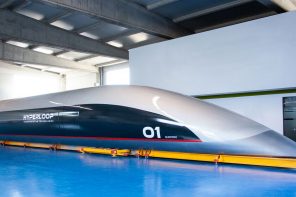Joe Nguyen is now the first person in Singapore to own a Tesla Model S, which is a fully-electric vehicle. He’s also paying a S$15,000 tax, approximately C$14,550, since the Tesla Model S is considered a non-fuel-efficient car under the Singaporean Carbon Emissions-based Vehicle Scheme (CEVS). How can a car that doesn’t even use fuel be taxed on emissions it’s not even generating?
To answer this question, we’ll need to look at what Singapore is doing differently compared to other (OECD) countries. In compliance with UN standards, Singapore measures and taxes energy use of vehicles on a “well-to-wheel” instead of a “tank-to-wheel” basis through the CEVS. Phrased differently, this means emissions generated from power plants, among other sources of electricity, are also considered when taxing vehicles. But wouldn’t electricity still be cleaner than directly using fuel to power your car?
Source: Energy Market Authority
It depends. Singapore relies on an energy mix consisting of almost 95% natural gas in order to generate electricity for the country (see picture above; also see pg 107). Compare that with a country like Canada (pg 24) or the US. In Canada, fossil fuels make up less than two-fifths of electricity generation. Meanwhile in the US, only about two-thirds of electricity is generated by fossil fuels. This accounts for the difference in tax treatment of electric vehicles in Singapore since electricity generation there is simply nowhere near as clean as we have it here in Canada. So why doesn’t Singapore simply reduce the amount of fossil fuels in its energy mix like we already do here in North America?
The answer lies in geography (see above map). Singapore is an incredibly small nation with incredibly few natural resources. Unsurprisingly, it must import all sorts of things, including fossil fuels and even water, from other countries. Similarly isolated countries, like South Korea (pg 69) or Japan (pg 65), have relatively cleaner electricity generation due to having at least 30% of its power being generated by nuclear energy. With very limited real estate, Singapore cannot just conjure up significant amounts of land in order to generate more clean electricity e.g. through hydroelectric, nuclear, solar or wind power which currently accounts for around 5% of its energy use; this is far lower than the world average of about 20% (pg 138).
However, it must be reiterated that Singapore is the only country complying with UN standards when it comes to the appropriate taxation of carbon emissions from vehicles. Countries like the US and Canada may actually be underestimating the amount of emissions and thus not properly accounting for the true costs. A lot of this can be attributed to governments not wanting to tax fossil fuels too harshly. But a good number of countries can still be argued to simply lack sufficient knowledge and oversight regarding proper accounting.
Regardless of what governments do, Tesla will find it in its interest to better communicate the true costs of owning a Tesla across different countries. With the recent release of the Model 3, who knows how many more people might end up with unexpected taxes. In keeping with their emissions-reduction goals, the company will need to be clearer about the fact that owning a Tesla vehicle may well be more harmful to the environment in certain countries like in Singapore.










